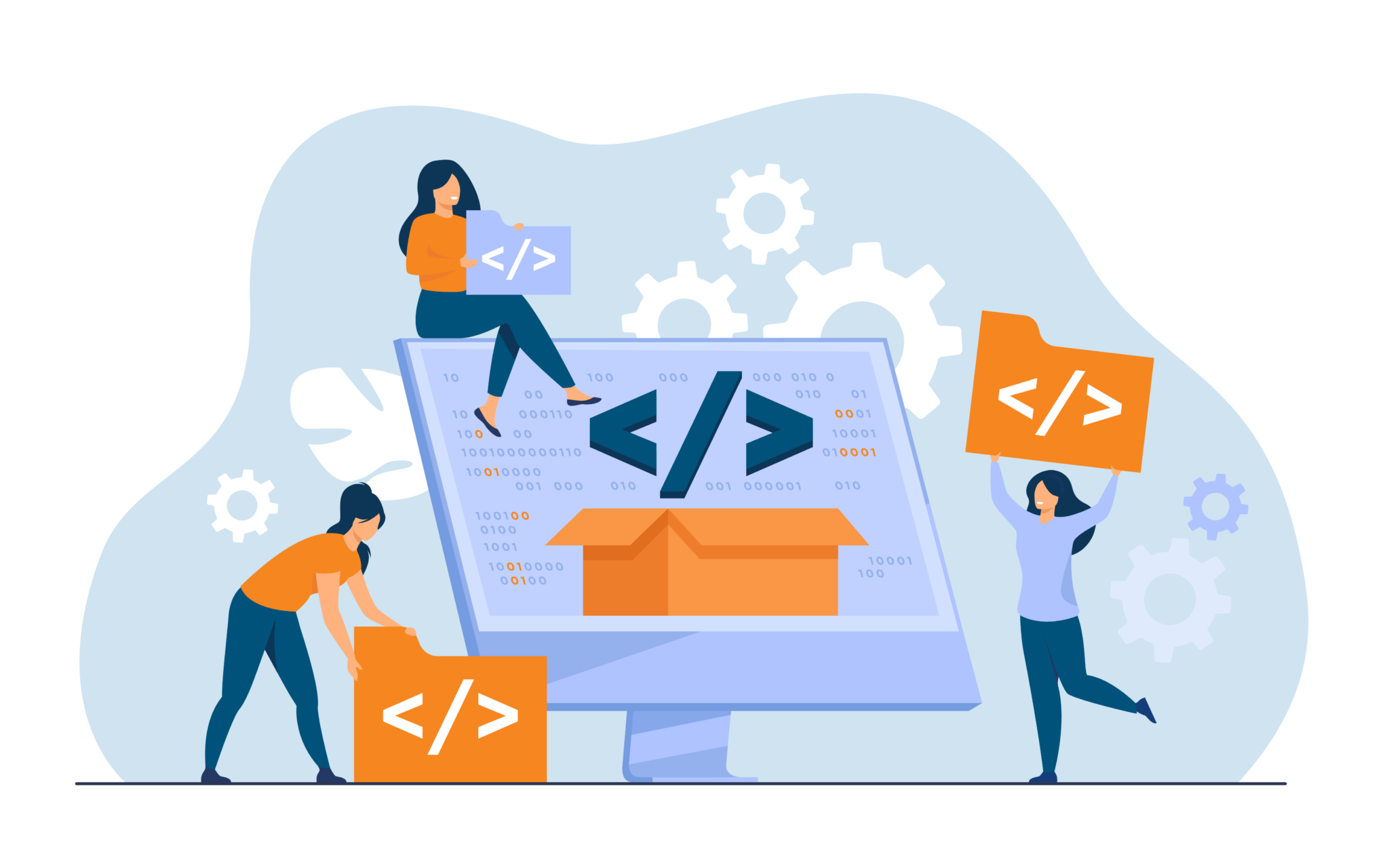Gartjan Grijzen is the CTO at Be Informed and one of the people who founded the company back in 2004. In this blog, Gartjan tells us everything about the exciting solutions that Be Informed has created and still creates. He also shares his view on the organizations’ journey towards a digital future.
Gartjan, you have been with Be Informed for almost 20 years. How did it all start?
“It all started with Be Value. The whole idea was to support the knowledge worker as the next frontier of automation. Up till then, automation was all about processing transactions and registering data. What was lacking was the support for the people who had to make decisions. When people make decisions, they should first know what the current rules are that apply to that specific situation. Subsequently, they should be able to explain on what grounds and data their decision was based. Decisions should be made in the proper context, be explainable and traceable to the source. However, when we started out there was no or very little support for this type of context-driven decision-making.
We actually started shaping and building Be Informed in the very same building that we currently reside in. That was back in 2004, with a small group of only 6 people. There were 3 developers, including myself, a business development manager, a managing partner, and an entrepreneur. We quickly realized that being a software vendor and a system integrator providing consultancy were two very different, sometimes conflicting things. Therefore, in 2006 Be informed was founded as a separate company. That’s also when other specialists, such as Ronald Heller (see the previous blog), joined us. There are still a lot of colleagues working at Be Informed that were already present in the early days. To me, this really shows how special Be Informed is and that a lot of us really believe in our product and company.
I’m very proud that we’re actually helping people and companies with the problems that we already identified back then. Realizing our vision is a dream come true. Our main drivers have hardly changed when it comes to the development of the Be Informed product. Of course, throughout the years we have evolved and significantly improved the product. But at the core, the current product is still what we wanted to create back then.
I’m very proud to see what we have achieved with this relatively small, but very focused and dedicated group of people. The professionals working at our company are all used to taking responsibility for their own tasks and actively strive to help our customers. This makes us very efficient and effective, but agile at the same time. And it enables us, together with our partners, to really live up to our vision: improving productivity through the automation of knowledge work.”
Can you give us a quick rundown of the most memorable projects Be Informed has worked on?
“That’s not an easy question. Working here for almost 20 years, I have been involved in so many projects, some of which I am still involved in today. But if I need to mention a few landmark projects, the first one I would think of is OLO. OLO (Omgevingsloket Online) is the first big project built with Be Informed, and it’s still up and running today. It’s an online environmental permit application that is used by many people in the Netherlands.
The second one is the project for the Immigration Office of the Netherlands (IND). This project allowed us to get a grip on how to capture the rules for automating dynamic processes. It has laid the foundation for our current dynamic process modeling. These are two projects from the early days. A great sight to behold.
The third project I want to mention – if I can refer to a partnership as a project – is the partnership we’ve built with BearingPoint Caribbean. BearingPoint Caribbean has built many solutions around the Be Informed platform. Our platform supports their tax and social security systems. It’s truly amazing to see how they are able, with the help of our platform, to efficiently master the complexity of tax and social security systems for small and developing countries (SIDS, small island developing states). Their solutions are actively helping those countries to improve government processes and the total standard of living.
The nice thing about all of our projects is that we receive the opportunity to get to know many organizations in many domains. This allows us to really understand how people in other industries and company types work, what kind of processes they have in place and how we can help them improve their day-to-day work.”
Do you still code?
“Yes, occasionally. Not because I need to, but because I enjoy doing it. Working together with our developers and programmers, discussing the new features, and helping implement those features: it remains interesting. After 19 years of working with the product, it feels like a child to me. I love maintaining, nurturing, and improving it.
Additionally, sitting together, working side by side, and improving the software is also an excellent way of knowledge sharing. At Be Informed, we truly value knowledge sharing. We always strive to involve multiple people when building a certain feature or component. This improves the skills of the individual and raises the bar to provide better overall quality. But it also ensures that we have always got a backup, for our systems and for our people. We cannot afford to rely on just one single person.
Like I said, building solutions with Be Informed is a team effort. For me, that’s one of our core values, and I’m thankful for being part of that team.”
What programming languages and development methodologies do Be Informed use?
“The core programming languages we used to build Be Informed are Java, XML, and JavaScript. On top of that we also use a lot of open-source libraries. As Be Informed is deployed as a web application, our developers need to have extensive knowledge about web technologies: HTML, CSS/SASS, React, REST, JSON, SQL, web application servers, and all kinds of integration middleware and security infrastructure. The third element that comes into play are the standards for capturing and modeling knowledge in general: semantic web standards like XMI, RDF/RDFS, OWL, topic maps, and standards for capturing legal knowledge. We are busy developing the latter in conjunction with our research partners TNO and the University of Amsterdam.
When it comes to methodologies, there are two main methodologies that are worth mentioning. One of them is of course Scrum. Scrum provides us with the means of incorporating a high level of agility in our end-to-end development process, but also hands us the tools to improve ourselves. Doing things slightly better today than the day before can make a big difference in the long run. Because you can never predict the future, one cannot define all requirements for a system upfront without misinterpretations creeping in. And you want to reserve plenty of room for improved insights along the way. That is why we believe in the power of Scrum and agile working when it comes to developing the Be Informed Platform as well as implementing Be Informed.
The second methodology I want to mention is Behavior Driven Design (BDD). It’s the counterpart of the declarative modeling in our platform. When you model your business rules in Be Informed, you use declarative models. We believe that this type of modeling allows you to stay in full control of all the rules and also provides the flexibility required for smoothly running day-to-day operations. We have experienced that the more procedural nature of BDD is an excellent, complementary verification method.”

What is your take on the future of digital transformation?
“Digital transformation is still one of the most talked-about subjects in the fields of technology and customer experience. People sometimes say the world has become more complex. I’m not sure whether the problems have become more complex, or if they’re just the only ones left.
I believe that in the past, many organizations tended to ignore the complexity of the problems. They just tried to solve them by putting everyone into the same “harness.” Not only in IT but in many industries. For example, when Henry Ford started the mass production of automobiles, people could choose every color they wanted, as long as it was black. Nowadays, when you order a new car, you can choose from millions of colors and a ton of options. And car manufacturers are able to mass-produce millions of variants efficiently. I really believe the same blueprint is applicable to virtually all other businesses. In our digital day and age, people demand personalized services and expect them to be available 24/7.
To me, that’s how organizations are finding out that neglecting complexity is no longer possible.
Our unique capability is that we recognize this complexity and provide the tooling that allows you to face it. From the start, we have separated the “know” from the “flow,” making a clear distinction between the “what” (the rules) and the “how” (the behavior). By splitting them up, we allow organizations to solve the complexity in multiple dimensions. “Divide and conquer,” so to say. Divide the problem into smaller, manageable parts and let the computer handle the combinatorial explosion.
To me, that’s the biggest advantage that Be Informed brings to the table when it comes to helping our clients. However, transforming organizations is difficult, simply because change is always difficult. People like stability. Change makes them uncertain and sometimes anxious. Therefore, preparing for a digital transformation is not only about technology; it also requires a good organizational change management strategy.”
How do you approach new customers?
“When we start talking to clients, most of the time, they have already tried to solve their problems with several other technologies that weren’t fit for the task. That is why many customers are – initially – skeptical. “Can you actually do what you’re saying?” is a recurring question.
So when we contact and visit a customer, our approach is to implement the change together: with instead of for the customer. Implementing Be Informed should not be something “magical” that happens out of sight at the Be Informed office. What we really do is take the customers along with us on the transformation journey. We make sure they understand what has been implemented and what choices can be made. This effectively empowers them to solve the problem themselves. Our key to transformational success? Allowing a customer to take full control of their company’s processes and giving them the opportunity to manage their own rules.
To make a long story short: it is not only about implementing a system in an organization. Any implementation will affect the organization directly. Therefore, we join our customers, from the employees to chief executives on the management level, when they embark on their digital transformation journey.”
Can you give us a use case that resulted in a successful digital transformation?
“I’m thinking of an interesting use case we encountered during the early days of Be Informed. We approached a customer who was in business-to-business insurance; they thought that Be Informed would be able to help them with automating the underwriting of the insurance case. We were asked to talk to an expert from the company who had more than 20 years of experience in his field. He was basically afraid that we were going to automate his work. And that’s, more or less, like talking to the turkey about Christmas Eve.”
This expert’s responsibility is to calculate the “premium” of insurance for cargo transportation. He was convinced that his work couldn’t be captured by rules. Because there are tasks like examining the cargo, seeing how they are being packed and kicking against it. [laughs]. So we discussed these things, asked a lot of questions, and then, together, came to the conclusion that he was using rules, and that we could automate that. We made sure he understood that we knew that he was the expert and that we were just there to help him. In the end, he became the biggest supporter of the project. And we helped him by automating the vast majority of the cases which were repetitive and boring, allowing him to focus on the special cases that deserve his specialized expertise.
So coming back to your question, the most important thing is not implementing a system, but freeing employees from routine repetitive tasks and helping them focus on what they are good at, and make sure to accompany them thoroughly throughout the entire transformational process.”
Thank you for your time. The last question: why should people want to work at Be Informed?
“People should want to work at Be Informed because we’re an organization that really makes a difference. Our people are appreciated for their work and contributions to the company. We empower each team member to be in control of his or her own career and excel in their jobs professionally with state-of-the-art technology.
Next to that, you will be able to work with large clients and make an impact on their organizations. You also join forces and work together with really skilled and talented colleagues, which helps you to get the most out of yourself and achieve the best possible results for our customers.”
Do you want to be a part of our IT heroes team? Check out our job openings here.






